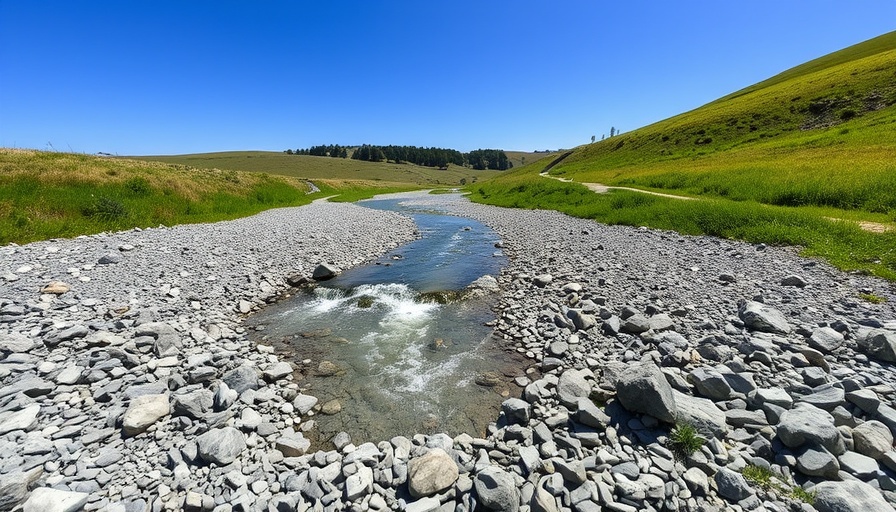
The Dilemma of Lake Levels in South Texas
In the face of drought, the recent showers in South Texas have proven to be a double-edged sword. Despite welcomed precipitation, both Canyon Lake and Medina Lake are experiencing a decrease in water levels—a troubling trend that impacts not only recreational activities but also local businesses who rely on these natural resources.
Impact on Local Economy
Local businesses, especially those in the tourism and recreational sectors, have begun to feel the pinch. As noted by Brian Dudik, a boat detailer at Canyon Lake, many service providers like him are experiencing significant downturns. “I've had to move to Lake LBJ because fewer tourists are coming here,” he explains. This shift highlights how environmental issues ripple through the community, affecting livelihoods alongside leisure.
Regional Water Management Challenges
The situation at Canyon and Medina Lakes underscores larger issues surrounding water management in South Texas. With population growth, industrial demands, and climate fluctuations, the challenge is maintaining adequate water resources. Additionally, a recent analysis shows that, historically, rain events have not replenished lake levels sufficiently due to evaporation and absorption rates.
The Role of Community Engagement
Local residents' engagement in conservation efforts can play a crucial role in addressing these water management challenges. Understanding the science of water retention and advocating for sustainable practices are essential. Community meetings focused on the impact of drought and water use can empower residents to make informed decisions that help protect vital resources.
Long-Term Predictions: What Lies Ahead
Experts predict that without consistent rainfall and climate management strategies, South Texas may continue facing low lake levels in future seasons. The long-term impacts could threaten not just local ecosystems but also the economy, particularly industries relying on water, such as agriculture and tourism.
Understanding the Underlying Causes of Drought
Drought is not a novel phenomenon in Texas but is becoming more severe due to climate change. According to the National Oceanic and Atmospheric Administration (NOAA), prolonged drought periods are expected to become a common occurrence, leading to more significant challenges in water management and community resilience.
The Importance of Adaptive Strategies
As drought conditions persist, adaptive strategies are essential for both environmental and economic sustainability. These may include rainwater harvesting, xeriscaping, and further investment in water conservation technologies. Communities should foster innovation and collaboration to develop solutions that ensure adequate water access for future generations.
Call to Action: The Community’s Role
The dual predicament at Canyon and Medina Lakes presents an opportunity for the local community to engage in meaningful discussions around water conservation and management. It is vital for residents to participate in local initiatives aimed at preserving their environment for future generations—acting now may shape the narrative of the region's water future.
As residents of the San Antonio area, it is crucial to stay informed about local environmental news and to actively participate in community discussions about water conservation. As the situation evolves, staying engaged can empower residents to advocate for sensible water management policies that will benefit both the environment and the local economy.
 Add Element
Add Element  Add Row
Add Row 



 Add Row
Add Row  Add
Add 


Write A Comment